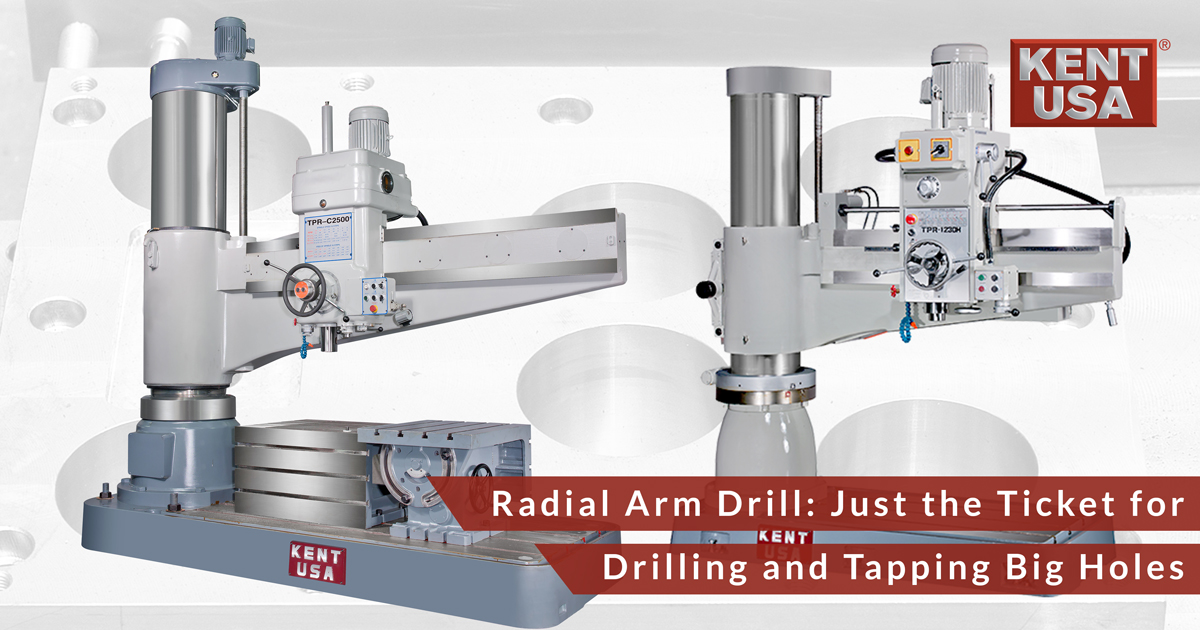Radial Arm Drill: Just the Ticket for Drilling and Tapping Big Holes
One of my first jobs was operating a radial arm drill for a sheet metal fabricator in Minnesota. I made $2.30 an hour. The company’s since gone out of business (it wasn’t my fault) but they made food processing equipment the size of mobile homes. Cereal dryers, pasta extruders, hot pocket machines, and so on. My title was “shop helper,” which is a nicer way of saying “grunt” (and worse names).
In short, I had to do all the dirty work. Running the chop saw, helping on the shear, buffing huge sheets of stainless steel—this was my introduction to manufacturing. And since they didn’t yet trust me to operate a forklift, I also had to carry raw material from one end of the shop to the other. Ugh. I was there maybe a week when my boss introduced to the radial arm drill, a Giddings & Lewis Chipmaster. It turned out to be my favorite part of the job.
Radial Arm Drill Remembrances
Never seen a radial arm drill? Or better yet, used one? Kent USA’s TRD-1230 is a good example of a modern radial arm drill. It has 12 spindle speeds. There’s a friction clutch to prevent damage to the gear box. A hydraulic clamping system to hold the arm in place, and a whole bunch of other features not yet invented when that World War II-era radial arm drill was built.
Still, that old dinosaur sure could make holes in a hurry. If you had the muscle, that is. The G&L had a power downfeed at one point, but I soon discovered that the previous shop helper broke the darned thing and no one bothered to get it fixed. As a 16-year old kid, I weighed all of 120 pounds back then. I had to haul on the quill with all my insignificant might to get any work done. The guys in the machine shop would stand there laughing at me as I hung from the handle with both hands, attempting to drive a 1-1/4″ drill bit through a piece of angle iron, or feed a 7/8-14 tap into a steel mounting block.
This is the kind of work that radial arm drills are good at. And fortunately, they’re much easier to use now than they were back in the day, regardless of your physical stature. Kent USA’s TRD would have made short work of those cereal dryer frames and pasta extrusion blocks. Still, I sure miss that old radial arm drill. It didn’t seem like much fun back then. Right about now, however, drilling a few holes sounds a whole lot better than riding a keyboard all day.
Share this article:


